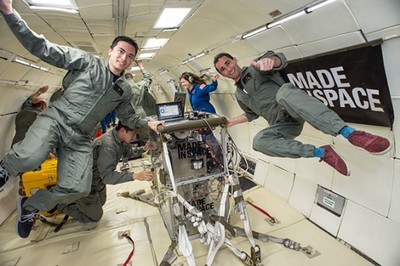Receiving provisions to astronauts on the International Space Station can be an extended, expensive procedure and, inappropriately, UPS doesn’t bring to outer space.Though, this week, appreciations to Made in Space’s Zero-Gravity 3-D Printer, astronaut Barry ‘Butch’ Wilmore got an intensifying socket wrench he wanted uplinked or transmitted to him in space, according to CNN reports.
Since its promotion was in September, the 3-D printer has complete a total of 21 objects aboard the ISS, rendering to Business Insider; those matters had before been tested on the printer with back-up files shaped. On December 17, MIS designed, capable, verified, and printed the wrench in space in less than a week, rendering to the MIS site.

Dissimilar to the 21 objects printed before it, the wrench’s design did not occur when the printer was first flung. The wrench took four hours to print , some people think it’s too much but believe me it’s worth waiting and the complete process took fewer than a week, CNN reports. The tool has curved boundaries and finger grooves to make it more ergonomic and recover the grip, according to MIS.
The wrench will be reimbursed to Earth, laterally with other 3-D printed parts, for estimation and analysis. The 3-D printer is the main to function in zero gravity, rendering to CNN, and printed its first item in November. The object was a portion for the printer.
In a news release b Niki Werkheiser, NASA’s 3-D print manager, said “The printer will be ‘critical for exploration mission.”
Werkheiser mentioned in a statement:
‘This means that we could go from having a part designed on the ground to printed in orbit within an hour to two from start to finish.’
‘The on-demand capability can revolutionize the constrained supply chain model we are limited to today.The printer will decrease cost, decrease risk, and increase efficiency, according to the news release.
The process of printing an object can take anywhere from 15 minutes to hours, depending on its size and complexity.’
The sequence of unlinking substances to the ISS comprises manipulative of the objects hardware, adapting that hardware into a file-format the 3-D printer can read, conveyance the file to NASA, and, to conclude, conveying the file to the ISS. The zero-gravity printer then admits the code and can prompt manufacturing the object unswervingly.
This new, inventive technology is an immense step for interstellar search. If this technology is introduced normally, astronauts would wait anyplace between weeks and months for objects they desirable in space. But now, thanks to the zero-gravity printer, astronauts no longer prerequisite to wait.
